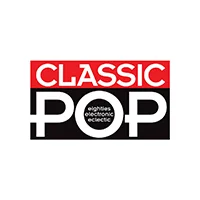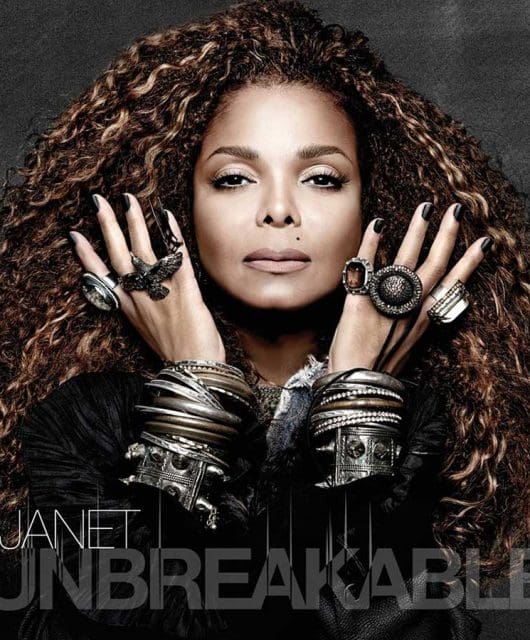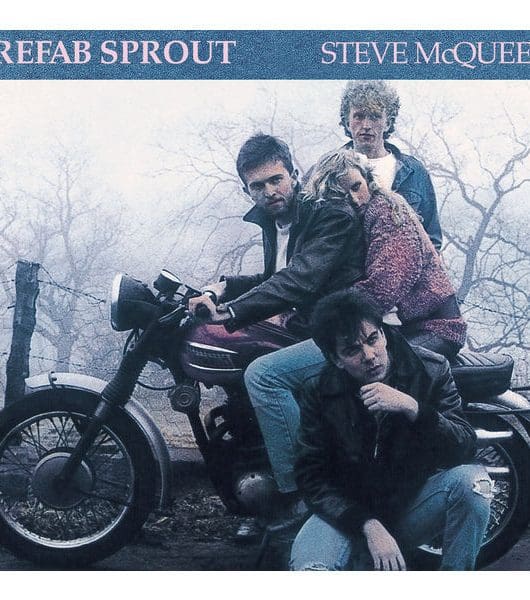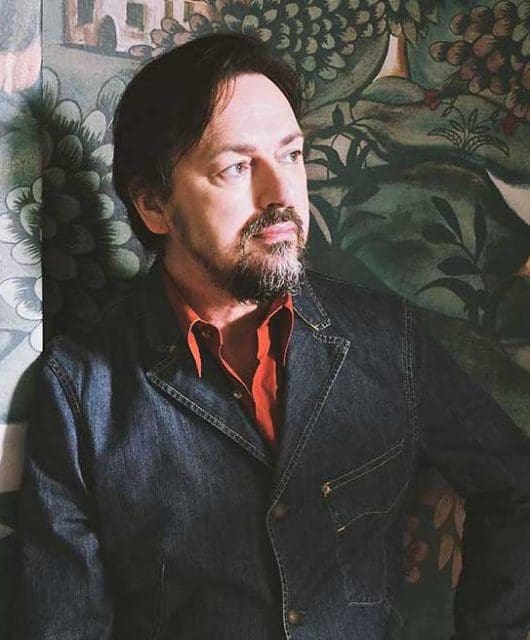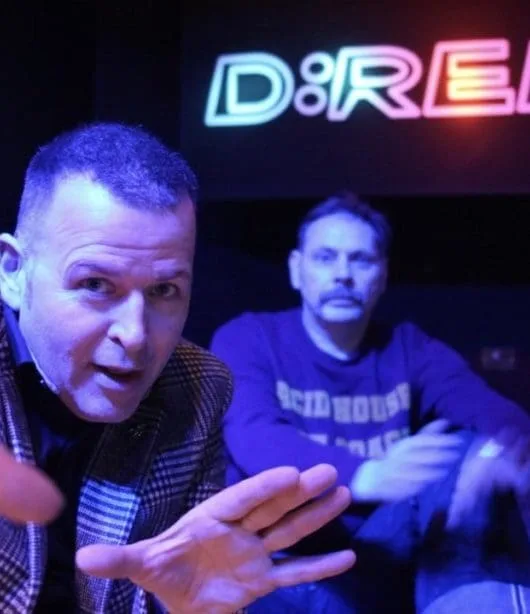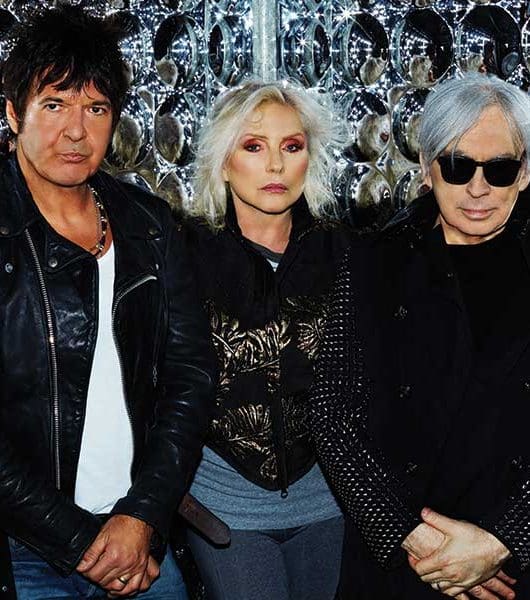Making Duran Duran: Rio
By Classic Pop | June 30, 2021
Duran Duran: Rio epitomised the 80s with its aspirational glamour. But it wasn’t all style – the record itself was packed with classic songwriting… By Mark Lindores

When Duran Duran touched down on British soil having returned from their first headlining tour of the US in September 1981, they did so with a relentless fervour and enthusiasm to achieve their ambition of global domination.
The trip had seen them taste the high life they craved and, with the outline of what would become their magnum opus firmly in place, Planet Earth would soon be theirs for the taking.
“That trip to America was the most exciting thing that had happened to us,” Nick Rhodes told VH1 in 2002. “We had just come back when we started work on Rio, so that energy that you can hear throughout the record is a direct result of that trip.”
Needing a follow-up to maintain the momentum of Girls On Film, the group went into the studio to record a standalone single, My Own Way. It reached No.14 in the UK and, although it wasn’t meant to be on the next album, it was later re-recorded and included.
On returning from their US tour, far from being burnt out by life on the road, the band was desperate to begin their second album. “We already had a lot of material ready and we knew as soon as we started working on the songs that there was something in our chemistry that just kept coming up with more and more music,” said Le Bon.
Having absorbed a wide range of influences while travelling, Duran Duran had cultivated a sound uniquely their own, amalgamating heavy funk polyrhythms, percussion effects and harmonically complex synth riffs. Though they were not part of any ‘scene’ that was around at the time, their distinctive sound incorporated elements of them all and was reflected in the naming of the album.
“To me, ‘Rio’ was shorthand for the truly foreign, the exotic, a cornucopia of earthly delights, a party that would never stop,” John Taylor wrote in his book In The Pleasure Groove: Love, Death And Duran Duran.
Once again with producer Colin Thurston at the helm, the sessions went incredibly smoothly, an outpouring of creativity bristling with energy.
“It was a combination of a band at the top of its game who were just having so much fun playing together every day, with a producer who knew exactly how to channel what he was hearing,” says John Taylor.
Sure enough, the Rio sessions at London’s AIR Studios produced a plethora of stadium-sized anthems that would provide the perfect soundtrack for Duran Duran to fulfil their ambitions of graduating from Hammersmith Odeon to Wembley to New York’s Madison Square Garden at 12-month intervals.
Though Rio is marked by the triumvirate of career-defining hits Hungry Like The Wolf, Save A Prayer and Rio, a high standard is maintained throughout the album. Cuts such as Hold Back The Rain, New Religion or Lonely In Your Nightmare were likely to have been monster hits had they been released as singles, while a last-minute addition to the album, The Chauffeur, highlighted the band’s darker, more experimental side.
Released on 10 May 1982, Rio reached No.2 in the UK and spawned a further three Top 10 singles, establishing Duran Duran as the biggest pop group in Britain.
Although regarded as pop’s hottest pin-ups, it was unusual that there was no photograph of the band on the front cover; instead, the sleeve of Rio carried a painting by US illustrator Patrick Nagel (they turned down an offer from Andy Warhol “because he had already done it for The Rolling Stones”) with graphic design from Malcolm Garrett, resulting in one of the most famous covers of the era.
Although their meteoric rise had them marked out as The Beatles’ successors in terms of Britpop ambassadors, Duran Duran were keen to hang on to the club crowd who had embraced them as a dance act with their first hits.
Read our article on Duran Duran’s Seven And The Ragged Tiger
Read our feature on Duran Duran’s 1990 album Liberty
They became one of the first bands to take advantage of the art of remixing songs, recording alternative or extended ‘Night Versions’ of songs, specifically for nightclubs, often available as 12” singles or EPs.
“We always did the Night Versions of the songs for clubs, but at that time we had to record them live,” recalls Roger Taylor. “You couldn’t cut them up on the computer and make loops as you do now. We played them live, and as some of these mixes were over 10 minutes long, they were quite difficult to do. If someone made a mistake, we’d have to go back to the beginning and start all over again.”
The Night Versions were important for the band, particularly in the US, where Duran Duran was marketed as a dance act. As Rio had underperformed Stateside on its initial release, an EP of remixes, Carnival, was offered that met with a much better reception.
Deciding to push the dance side of the band in the States, EMI hired producer David Kershenbaum to remix the album. A remix of Hungry Like The Wolf reached No.3 in the US, their breakthrough hit there, while the new version of the album also fared much better, peaking at No.6.
Any doubts the band had as to whether they had broken America were cast aside when 12,000 fans descended on a record store signing in New York.
As visual identity was becoming a more predominant force in the industry, the aesthetics of the group became a major factor in their appeal, with the Duran HQ turning into a creative hub of music, video, fashion and design.
“We really made an effort with the videos, the style and the artwork,” insists Nick Rhodes. “We saw ourselves as more of a multimedia corporation than a rock band.”
A meeting between director Russell Mulcahy (who had directed the video for Planet Earth) and Paul and Michael Berrow resulted in the decision to join the group in Sri Lanka – where they were holidaying to unwind after their US tour – and Antigua to film a series of promos originally planned as a ‘video album’. This was something of a revolutionary concept.
Russell, a self-confessed “frustrated film director”, was assigned with creating the images that would transform the way pop music was processed. These videos were no longer just a marketing tool to promote a single: Russell’s vision – with James Bond and Raiders Of The Lost Ark as reference points – was for a series of ‘mini movies’.
Hungry Like The Wolf, Save A Prayer and Rio all garnered heavy rotation on the new 24-hour music station MTV and made Duran Duran the first idols of the video age.
The channel gave them a platform to create a vivid visual landscape in which they portrayed themselves as Price-clad pop playboys, pursued across tropical seas by body-painted beauties.
Read more: Duran Duran Superfan
Read our feature on Duran Duran’s cover art
As Britain faded to grey, gripped by a recession, record numbers of unemployment and the Falklands War, these vibrant videos proved the perfect antidote to the bleak times. “We didn’t have an axe to grind, we didn’t have a political agenda,” says John Taylor. “We just wanted to have fun and wanted everyone around us to have fun.”
With eventual sales of six million copies, the success of Rio launched Duran Duran to the top of pop’s premier league.
The epitome of style and substance, they were at the forefront of the second British invasion of America, where they were dubbed the “prettiest boys in pop” and “the Fab Five”, while back home they sparked scenes of hysteria that hadn’t been seen since Beatlemania, with John Taylor’s five-year residency at the top of the Most Fanciable Male category in the Smash Hits Winners Poll confirming him as the band’s heart-throb.
After three decades of hits, Rio is regarded by the band, their fans, and their former nemeses the critics as a pop classic and the pinnacle of Duran Duran’s career.
Writing in his autobiography, John Taylor describes the album as “the sound of what happens when a group of passionate, music-loving, fame-hungry guys are given some support, nurtured and put to work harder than any of them thought possible. Every one of us is performing on the Rio album at the peak of our talents. THAT is what makes it so exciting.”
Duran Duran: Rio – The Songs
Rio
Opening with a cataclysmic crash – actually a recording of Nick Rhodes throwing iron rods into a grand piano, played backwards – Rio has a driving beat, a funk-inspired bassline, rocky guitar licks and innovative arpeggiator synth sounds and displays all the trademarks of the ‘Duran Duran sound’.
A hybrid of an early demo, See Me, Repeat Me and Stevie’s Radio Station by TV Eye (a band featuring ex-Duran singer Andy Wickett), Rio reached No.9 in the UK. The song has a double meaning: “Rio” is both a metaphor for America and for the band’s desire to make it big there.
My Own Way
Intended as a single-only release to bridge the gap between Girls On Film and the band’s second album, My Own Way is a slice of spiky new-wave pop recorded at London’s Townhouse Studios in October 1981 and released as Duran Duran’s fourth single, peaking at No.14.
It was remodelled and slowed down in 1982 for its inclusion on Rio. The song is one of the band’s least favourites; it is ignored by both 1989’s Decades and 1998’s Greatest compilations and has rarely been performed live on any of their tours.
Lonely In Your Nightmare
A firm fan favourite, this downbeat, guitar-driven affair perfectly showcases Andy Taylor’s skills. It was remixed by David Kershenbaum for the US album, with extra lyrics and longer instrumental sections. A singles video was shot, but the plan was vetoed and it was only included on the Duran Duran video album. The shoot took place in London and Sri Lanka alongside the Hungry Like The Wolf and Save A Prayer videos.
Hungry Like The Wolf
According to Andy, this was the result of “fiddling with the new technology that was starting to come in”. Completed in one day, it featured a Roland
TR-808 drum machine and a Roland Jupiter 8 synth, plus a Le Bon lyric comparing the pursuit of a lover to the wolf from Red Riding Hood. The song took Duran Duran’s career to a new level, reaching No.6 in the UK. Six months later, a remixed version reached No.3 on the Billboard Hot 100.
Hold Back The Rain
An all-time Duran Duran highlight, this perfect fusion of stadium rock and punky pop was written during the US tour as a plea from Le Bon to John Taylor to curb his hard partying.
Simon wrote the lyrics on a sheet of paper and put them under the door of John’s hotel room; they have never discussed them to this day. As a B-side to Save A Prayer the song garnered heavy airplay, leading many to hail it the great “lost Duran Duran single”.
New Religion
The closest Duran Duran ever got to John Taylor’s dream of blending punk with Chic, New Religion mixed dark synths and guitars with a funk-driven bassline inspired by Stay from David Bowie’s Station To Station.
Lyrically, the song is “a dialogue between the ego and the alter-ego”, translated by using multi-tracked vocals to represent the protagonist’s inner turmoil.
Last Chance On The Stairway
Perhaps the most overlooked song on Rio, Last Chance On The Stairway is an ode to sexual desire, lifted by a superb guitar solo from Andy Taylor and a hint of the bizarre (a marimba?!).
The hook-laden melody and perfect lyrical structure are testament to how tightly Duran Duran were operating as songwriters and musicians at this point. Any track from Rio could have become a Top 10 hit, and this underrated gem is no exception.
Save A Prayer
As Duranmania began to explode, Save A Prayer, though a ballad, was just too good to leave languishing on an album. The lush melody, the multi-layered harmonies, Nick’s exotic synths, Andy’s guitar and Simon’s melancholic vocals all built into a glorious yearning chorus; it’s a resounding pop triumph which evokes Roxy Music, and it is perhaps their greatest moment.
Le Bon’s lyrics are a lament to seduction culminating in the live-for-the-moment line “Some people call it a one-night-stand, but we can call it paradise”. Reaching No.2, it was their biggest UK hit to date, only kept from the top spot by Survivor’s Eye Of The Tiger.
The Chauffeur
Originating from the notebook of poetry that Simon Le Bon presented to the group at his first audition, the Rio version of The Chauffeur was very different from its demo.
Originally an acoustic-based song, Nick Rhodes stripped it back and rebuilt it with a sequencer, reinventing it as the most experimental moment on the album – a sinister synth-infused comedown after the fervent non-stop energy of the rest of the album. Despite having no single release, the song is often cited as one of the band’s best.
For more info on Duran Duran check out their official website here
Read more: Scritti Politti’s Green Gartside interview
